#Hiroshi Nawa
Text

Films Watched in 2023:
106. ウルフガイ 燃えろ狼男/Wolf Guy (1975) - Dir. Kazuhiko Yamaguchi
#ウルフガイ 燃えろ狼男#Wolf Guy#Kazuhiko Yamaguchi#Sonny Chiba#Kyōsuke Machida#Etsuko Nami#Kumi Taguchi#Yayoi Watanabe#Rikiya Yasuoka#Harumi Sone#Hiroshi Nawa#Films Watched in 2023#My Post
3 notes
·
View notes
Text
A Must Have for physical media aficionados – Big Time Gambling Boss (Blu Ray Review)
A Must Have for physical media aficionados – Big Time Gambling Boss (Blu Ray Review)
(more…)
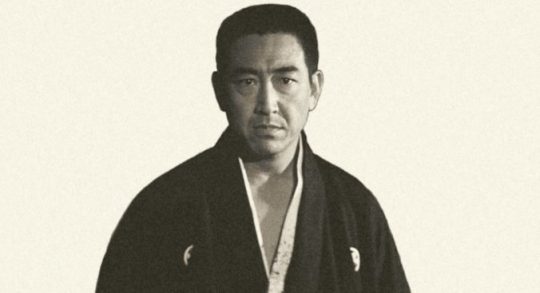
View On WordPress
#Battles Without Honour and Humanity#Big Time Gambling Boss#Black Rain#blu ray#Hiroshi Nawa#Kôji Tsuruta#Lone Wolf & Cub#Miami Blues#physical media#Radiance Films#Ridley Scott#Tomisaburô Wakayama#Welcome to the Dollhouse
1 note
·
View note
Text

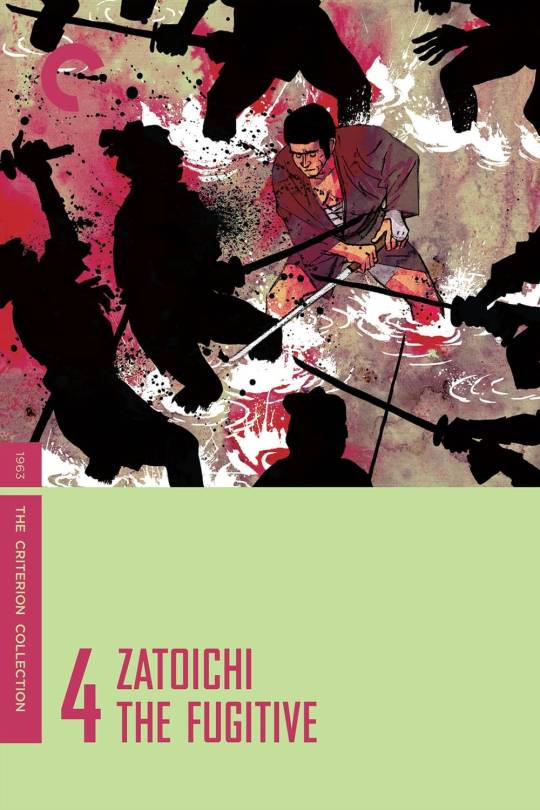
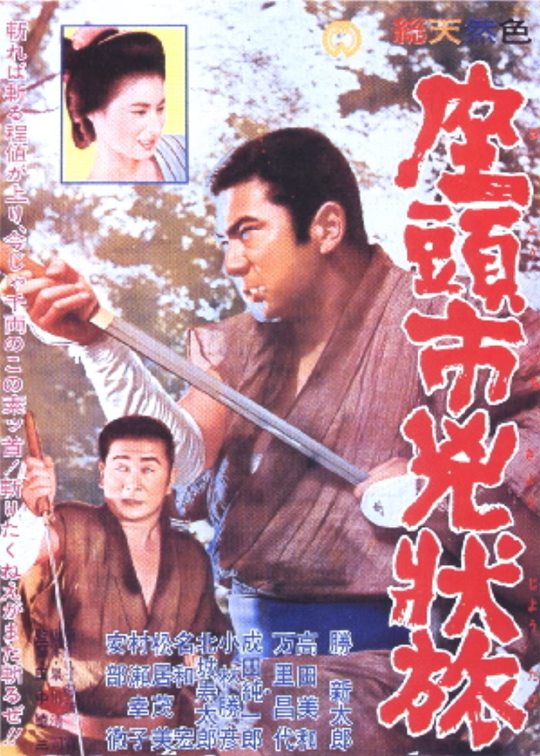

W A T C H I N G
#ZATOICHI THE FUGITIVE (1963)#SHINTARO KATSU#WATCHING#座頭市兇状旅#Zatōichi Kyōjō tabi#Miwa Takada#Sachiko Murase#Masayo Banri#Junichiro Narita#Katsuhiko Kobayashi#Toru Abe#Koichi Mizuhara#Jutaro Hojo#Hiroshi Nawa#Koichi Mizukami#Yasuhiro Mizukami#Samurai#ronin#yakuza#Chambara film#Jidaigeki#Jidaigeki film
1 note
·
View note
Photo
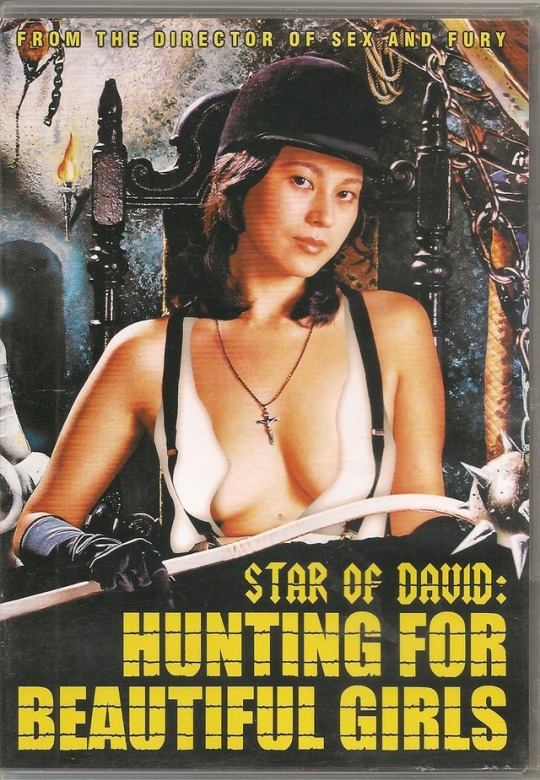
Bad movie I have Star of David : Hunting for Beautiful Girls 1979 original title Dabide no hoshi: Bishôjo-gari
#Star of David : Hunting for Beautiful Girls#Nikkatsu#Hiromi Namino#Natsuko Yashiro#Asami Ogawa#Shun Domon#Rei Okamoto#Yuka Asagiri#Hiroshi Nawa#Shôhei Yamamoto#Nagatoshi Sakamoto#Noboru Mitani#Bin Moritsuka#Akira Takahashi#Hiroshi Ichimura#Toshihiko Oda#Tatsuya Hamaguchi
5 notes
·
View notes
Photo
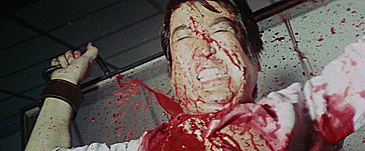
Wolf Guy - Kazuhiko Yamaguchi 1975
12 notes
·
View notes
Photo
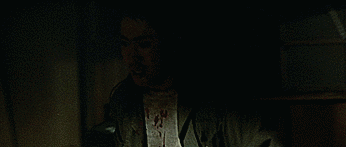


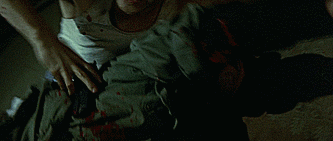
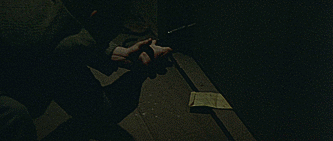


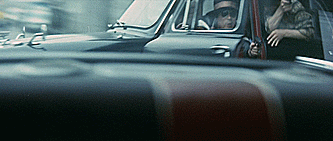
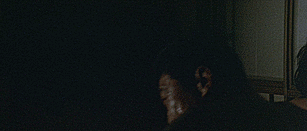

Hiroshima Death Match (1973)
#hiroshima death match#Kinji Fukasaku#bunta sugawara#shin'ichi chiba#Meiko Kaji#shingo yamashiro#hiroshi nawa#mikio narita#gin maeda#toshie kimura#hiroshima shitô hen
24 notes
·
View notes
Text
1950 Nendai No Kayōkyoku – Keiongaku Ni Yoru (1993)

Playlist
Yoshio Kimura and Beards – Mizuiro No Waltz (3:30)
Columbia Symphonic Orchestra – Shiroi Hana No Saku Koro (3:01)
Yoshitaka Horiuchi, Columbia Orchestra – Azami No Uta (2:38)
Columbia Orchestra – Shanghaigaeri No Lily (3:31)
Hiroshi Sakata, Columbia Orchestra – Ringo Oiwake (4:25)
Yoshio Kimura and Beards – Red Lamp No Shūressha (3:34)
Takeshi Yamamoto, Columbia Orchestra – Kimi No Nawa (2:08)
Meiji University Mandolin Club – Natsu No Omoide (3:29)
Mr. Toyoshi, Columbia Orchestra – Otomisan (2:20)
Columbia Orchestra – Konoyo No Hana (2:22)
Columbia Orchestra – Casbah No Onna (3:25)
Toshio Kawamura & his orchestra – Sukidatta (2:33)
Columbia Orchestra – Koko Ni Kō Ari (2:50)
Columbia Orchestra – Minatomachi Jūsan banchi (3:09)
Columbia Orchestra – Odoriko (2:53)
Columbia Orchestra – Tōkyō No Basugāru (3:33)
Yoshio Kimura, Yasunobu Matsuura, Columbia Orchestra – Yūrakuchō De Aimashō (3:33)
Yoshio Kimura, Yasunobu Matsuura, Columbia Orchestra – Kuroi Hanabira (2:47)
Yoshio Kimura and Beard – Aitsu (2:53)
Columbia Orchestra – Minami Kokudo Sa O Go Ni Shite (3:26)
1950 Nendai No Kayōkyoku – Keiongaku Ni Yoru (1993) published first on https://soundwizreview.tumblr.com/
0 notes
Text
New Books February/May 2018
Sorted by Call Number / Author.
170.44 M
David McCullough, Jr., 2014. You Are Not Special : and Other Encouragements. New York : Ecco, and imprint of HarperCollins Publishers, 2015.
326 S
Sellers, James B. Slavery in Alabama. Tuscaloosa: Univ. of Ala. Pr., 1950.
329.3 B
William D. Barnard, 1974. Dixiecrats and Democrats : Alabama Politics 1942-1950. Alabama : University of Alabama Press, 1974.
338.2 D
Dumett, Raymond E. El Dorado in West Africa : the gold-mining frontier, African labor, and colonial capitalism in the Gold Coast, 1875-1900. Athens : Ohio University Press ;, c1998.
398.23 A
Mark Adams, 2015. Meet Me in Atlantis : Across Three Continents in Search of the Legendary Sunken City. First Edition. New York : Dutton: an Imprint of Penguin Random House, 2016.
808.1 J
Donald Justice, 2017. Compendium : A Collection of Thoughts on Prosody. Oakland : Omnidawn Publishing, 2017.
811 F
The Ecopoetry Anthology.
"An anthology of American poetry about nature and the environment, divided into a historical section with poetry written from roughly the mid-nineteenth to the mid-twentieth century and a contemporary section with over 300 poems written since 1960 by a diverse group of more than 170 poets. Introduction by Robert Hass"--Provided by publisher.
811.54 S
Cole Swensen, 2017. Gave. Oakland : Omnidawn Publishing, 2017.
915.2 B
Nicholas Bornoff, 2000. National Geographic Traveler Japan. Third Edition. Washington DC : National Geographic Society, 2000.
917.61 V
Virginia Van der Veer Hamilton and Jacqueline A Matte, 1996. Seeing Historic Alabama. Tuscaloosa : University of Alabama Press, 1996.
940.542 R
Micheal Reynolds, 1995. The Devil's Adjutant : Jochen Peiper, Panzer Leader. United Kingdom : Spellmount, Ltd, 1995.
947.084 A
Paul Avrich, 1991. Kronstadt 1921. First Edition. Princeton, New Jersey : Princeton University Press, 2015.
959.704 G
Martin H. Greenberg and August Richard Norton, EDS., 1985. Touring Nam : The Vietnam War Reader. First Edition. New York : William Morrow and Company, Inc, 1985.
961 P
Peoples of North Africa. New York : Facts On File, c1997.
Arabs of North Africa -- Baggara -- Beja -- Berbers -- Copts -- Dinka -- Nuba -- Nuer -- Shilluk -- Tuareg.
973.3 M
Edmund S. Morgan, 1956. The Birth of the Republic : 1763-89. Third Edition. Chicago : The University of Chicago Press, 1992.
976.4 H
Sam W Haynes, 1990. Soldiers of Misfortune : The Somervell and Mier Expeditions. First Edition. Austin, Texas : University of Texas Press, 1990.
996.23 I
Pascal James Imperato, 1996. Historical Dictionary of Mali. Third Edition. Lanham, Maryland : Scarecrow Press Inc, 1996.
92 Eleanor of Aquitaine
Polly Schoyer Brooks, 1983. Queen Eleanor: Independent Spirit of the Medieval World : A biography of Eleanor of Aquitine. New York : Houghton Mifflin Company, 1983.
92 Walters
Barbara Walters, 2008. Audition : A Memoir. New York : Random House Inc, 2008.
CD Act
Stern, David Alan. Acting with an accent. : dialect instruction.
CD Act
Stern, David Alan. Acting with an accent. : dialect instruction.
Instruction for actors in the reproduction of two major Australian dialects, with emphasis on resonance, vowel and consonantal changes. Author explains differences between Cockney and Australian English and introduces the third dialect of Australia used by the upper classes.
CD Act
Stern, David Alan. Acting with an accent. : dialect instruction.
Instruction for actors in the reproduction of English as spoken in Boston and parts of New England, with emphasis on creation of proper resonance, lilt and inflection and vowel and consonant changes.
CD Act
Stern, David Alan. Acting with an accent. : dialect instruction.
Instruction for actors in the reproduction of the British Cockney accent, with emphasis on resonance, pitch and pronunciation changes.
CD Act
Stern, David Alan. Acting with an accent. : dialect instruction.
Instruction for actors in the reproduction of English as spoken by persons whose native language is French, with emphasis on recreation of resonance, vowel changes, rhythm, pitch and stress traits, and consonant substitutions.
CD Act
Stern, David Alan. Acting with an accent. : dialect instruction.
Instruction for actors in the reproduction of English by persons whose native language is German, with emphasis on creation of proper resonance, stress and pitch traits, "r" and other consonantal changes.
CD Act
Stern, David Alan. Acting with an accent. : dialect instruction.
Instruction for actors in the reproduction of generalized New York speech, with emphasis on resonance, pitch and phonetic change.
CD Act
Stern, David Alan. Acting with an accent. : dialect instruction.
Instruction for actors in the reproduction of English as spoken by persons whose native language is Russian, with emphasis on creation of proper resonance, pitch and stress traits, and consonantal substitution.
CD Act
Stern, David Alan, author, narrator. Acting with an accent. : received pronunciation. Third edition.
Narrated by David Alan Stern. Instruction for actors in the reproduction of standard British English with emphasis on resonance, pronunciation, pitch, dropping R's, and isolated sound changes.
CD E
Foer, Jonathan Safran, 1977-. Everything is Illuminated. Prince Frederick, MD : Recorded Books, 2002.
Narrated by Jeff Woodman and Scott Shina.
CD S
Mark Anderson, 2005. Shakespeare by Another Name : The life of Edward de Vere, Earl of Oxford, the man who was Shakespeare. Minnrapolis, MN : Highbridge Audio, 2005.
DVD Zat
Zatoichi : New Tale of Zatoichi. c. 1963: Orig. produced by Kadokawa Herald Pictures, Inc. Chatsworth, CA : Image Entertainment, Inc, c. MMVI.
Episode 3 of 4-episode DVD set. Starring: Shintaro Katsu; Mikiko Tsubouchi, Seizaburo Kawazu, Fujio Suga, Mieko Kondo, Chitose Maki. With more killer swordsmanship, romance and action-packed drama, the Blind Swordsman is back in the first color episode of the Zatoichi series. Masseur Ichi returns to his home village to discover that his former teacher has been hiring out his swordsmanship skills to a ruthless gang of kidnappers. Meanwhile, the mentor's sister offers herself in marriage to Zatoichi, who must decline because of the danger it would bring to any woman Ichi was known to love.
DVD Zat
Kadokawa Herald Pictures Inc, 1963. Zatoichi : The Fugitive. California : Home Vision Entertainment.
Episode 4 of 4-Episode Set. Starring: Shintaro Katsu, Miwa Takada, Masayo Banri, Junichiro Narita, Katsuhiko Kobayashi, Toru Abe, Jutaro Hojo, Sachiko Murase, Hiroshi Nawa. Zatoichi seeks bloody vengeance on a ruthless gang and a powerful ronin in episode four of the Blind Swordsman series. Arriving in the village Zof Shimonita, Ichi learns that a local gang has placed a bounty on his head. A powerful hired ronin attacks Ichi and nearly claims his life, but when a defenseless woman is slain by the assassin, Ichi can no longer control his rage. After laying waste to the entire gang, Ichi's final duel becomes a deadly meeting of the samurai's superior swordsmanship and the blind masseur's unbridled rage.
ES 741.5
Charles M. Shulz, 2015. Snoopy y Carlitos : 1977 a 1978. Barcelona : Planeta Comic, 2015.
ES 745.1 S
Charles M. Shultz, 2015. Snoopy y Carlitos : Soy Cool. First Edition. Barcelona : Duomo, 2015.
ES 745.1 S
Charles M. Shulz, 2014. Snoopy Y Carlitos : Nunca Cacas a un Sabueso. First Edition. Barcelona : Duomo, 2014.
ES 745.1 S
Charles Shulz, 1985. Carlitos : Cuida a Snoopy. Barcelona : Ediciones Junior, 1985.
ES 863.5 M
Jose Marti, 1853-1895. La Edad de Oro. 19th Edition. Santafe de Bogota : Panamerican Editorial, 1997.
ES 891.73 D
Fiodor Mijailovich Dostoievsky, 1821-1881. Cuentos de Dostoievsky : Cajon de Cuentos. 19th Edition. Bogota : Panamerican Editorial, 2003.
ES 891.73 T
Leon Tolstoi, traducido por Francisco Montana, 1996. Cajon de Cuentos. Spanish Edition. Santafe de Bogota : Panamerican Editorial, 1996.
ES F Jod
Alejandro Jodorowsky, 1997. El dedo y la luna. First Edition. Barcelona : books4pocket, 2007.
ES F Pin
Virgilio Pinera, 2004. Cajon de Cuentos. Bogota : Panamerican Editorial, 2004.
ES F Wil
Oscar Wilde, 2009. Cuentos escogidos. Madrid : Lual Ediciones, 2009.
F Avi
Avi, 1996. Beyond the Western Sea : The Escape from Home. New York : Avon Books Inc, 1997.
F Gai
Ernest J Gaines, 1983. A Gathering of Old Men. First Edition. New York : Vintage Books, 1984.
F Gya
Yaa Gyasi, 2016. Homegoing : a novel. New York : Alfred A. Knopf, 2016.
F Jam
Henry James, 1878. Daisy Miller. New York : Dover Publications, Inc, 1995.
F McN
Cliff McNish, 2006. Breathe : A Ghost Story. First Edition. Minneapolis : Carolrhoda Books, 2006.
F Rya
Pam Munoz Ryan, 2000. Esperanza Rising. New York : Scholastic Inc, 2000.
F Sha
William Shakespeare, 1993. A Midsummer Night's Dream : Folger Shakespeare Library. New York : Simon & Schuster Paperbacks, 1993.
F She
Shelley, Mary Wollstonecraft, 1797-1851. Frankenstein : the 1818 text, contexts, criticism. 2nd ed. New York : W.W. Norton & Co., c2012.
F Sin
Upton Sinclair, 1906. The Jungle. New York : Bantam Books, 1981.
F Ste
John Steinbeck, 1992. The Pearl. New York : Pengiun Group, 1992.
R 290 N
New Larousse encyclopedia of mythology. New ed. New York? : Prometheus Press, 1968.
R TEST PREP
College Board, 2012. AP Biology Investigative Labs : An Inquiry-Based Approach. Second Printing. New York : College Board, 2012.
R TEST PREP
Phillip E. Pack, 2013. Cliffsnotes AP* Biology. Fourth Edition. New York : Houghton Mifflin Harcourt, 2013.
0 notes
Conversation
*continuation* Story of my life
Inhale👃 Exhale👄
It's my turn to introduce myself in front so I stood up and walk towards the board and face my classmates.
Inhale👃 Exhale👄
You can do it! Don't be nervous!
Prof: You okay?
Me: A-eh y-yes prof!
Arrgh! Do I stammered? Yea probably! Shame on yourself! Tsk. Okay okay. Fighting! This is just an introduction.
Me: H-hi everyone! I'm Rukawa Nawa, but call me rukawa for short. 12 years of age. I'm from Guagua but stayin' in lubao for good. Some of my hobbies are singing, reading and writing. Hmmmm. Well, that's all thank you. Hope you'll be good to me hehe.
Prof: Good. Oh you can sing?
Even I am too shy, I nodded my head.
Classmates: Sample! Sample! Sample!
Prof: Oh how it is Ms. Nawa, can you show us your talent?
Goshhhh! What the heck did I just do? I don't want an attention huhu.
Me: O-okay prof!
Classmates: Yuhooooo!
Me: 🎶Heaven Knows🎶 Girl version
He's always on my mind from the time I wake up till I close my eyes...
Classmate 1: O-M she has a nice voice!
Classmate 2: Her voice is very soft!
Classmate 3: I like her already! Yiee!
Tok! Tok!
So I stopped, when someone's knocked on the door. I should thank him/her whoever he/she is.
Prof: Oh Mr. Hiroshi why are you late?
Then It was caught our attention, My mouth's tiny open when I saw who it is. The guy at the bookstore! Is it coincidence? How can this happen?
That guy: Sorry, I'm late.
Then next thing I knew, he looked at me in surprised. But he quickly get himself back to normal. Tsk. Is he always like that? I'm just curious. Huh.
0 notes
Text
Japanese Art, on Its Own Terms
New Post has been published on https://usnewsaggregator.com/japanese-art-on-its-own-terms/
Japanese Art, on Its Own Terms
How to prevent flattening cultural context while encouraging foreign audiences to embrace the unfamiliar? Ms. Hasegawa tackles that question in “Japanorama.” Having previously presented Japanese contemporary art in Brazil, Britain and Germany, she “looked very carefully at the past 10-15 years: what was organized, what kind of Japanese contemporary art has been collected in public institutions in Europe.” She continued: “I want to bring awareness to context behind what people misunderstand, to the social commentary behind the works.”
Ms. Hasegawa’s vast and thoughtful synopsis encompasses six themes (called “archipelagos”) that bridge art, architecture, video, fashion and music. She porously connects movements and multimedia across two floors, with a mise-en-scène conceived by the Tokyo architects SANAA. (The Pompidou Center Metz itself was designed by the Japanese architect Shigeru Ban).
Photo
Visitors watch silicone oil rain down without making a splash in Kohei Nawa’s “Force”. Credit Dmitry Kostyukov for The New York Times
The first section, “Strange Object/Post-Human Body,” confronts visitors with “Electric Dress,” a multicolored cluster of lights, created in 1956 by Atsuko Tanaka, that prefigures today’s evolving relationship between the physical and the digital. The piece resonates with Comme des Garçons garments on display, which present an alternative approach to Western ideas of beauty and body image.
Transfigurations unfurl throughout this section: Ms. Hasegawa notes “traumatic ideas about the atomic bomb and pollution-activated mutation” in two “very weird, very critical” late 1960s cocoon pods by Tetsumi Kudo). New technology informs the work of the ’80s collective Dumb Type, the techno-pop musical outfit Yellow Magic Orchestra and the programmers and artists behind Rhizomatiks. Rhizomatiks contributes a visualization of Bitcoin’s blockchain system rejigged according to live transactions, in a digital ballet that shows a forward-looking evolution of Japanese creativity.
Within the Pop Art sphere, Ms. Hasegawa has highlighted works with a strong conceptual background and Japanese specificity. She wishes to undercut the way in which Japanese pop culture is often understood as sunny or silly: The graphic kitsch is, in fact, inherently critical, she says. “It’s vernacular — but also very sophisticated,” she added. The artist Takashi Murakami’s work in this vein, is perhaps the most well-known, but it is also the most misunderstood. The painted smileys of his “Cosmos” are not just bright and fun — the composition owes everything to 18th-century Edo paintings. His lesser-known “Polyrhythm Red” canvas, adorned with Tamiya soldier figurines, reflects, Ms. Hasegawa said, “Japanese culture becoming childish,” and a malaise about violence and vulnerability.
Photo
The photographer Hiroshi Sugimoto’s “Seascapes” series, in a section of the exhibition titled “Materiality and Minimalism.” Credit Dmitry Kostyukov for The New York Times
The exhibition also overturns the seeming naïveté of “kawaii,” Japan’s signature brand of cute, to reveal assertions of sociopolitical frustration. A 2002 kimono using Bingata, the traditional dyed fabric of Okinawa — where the artist Yuken Teruya grew up, near a United States Army base — is especially striking. The cheery flowers and trees on the garment are, upon closer inspection, composed of fighter planes and parachutes.
Continue reading the main story
The exhibition concludes with a section on “Materiality and Minimalism,” highlighting examples such as Hiroshi Sugimoto’s calm photographs of horizon lines and Ryoji Ikeda’s trancelike work based on numerical data. “It’s a landing,” Ms. Hasegawa said of the exhibition’s finale, to “look at something sublime.”
Kohei Nawa’s breathtaking “Force,” an installation of viscous black silicone oil, which rains down without making a splash, appears soothing, but this is deceptive: Its subject is radioactive fallout. Like many works in “Japanorama,” it shows that simple does not mean straightforward, that beautiful things can contain disquieting fears.
To grapple with these nuances requires being open to another perspective. In this sense, the show’s most emblematic piece is by the artist Shimabuku. His video “Then, I Decided to Give a Tour of Tokyo to the Octopus from Akashi,” is as gently funny as it is affecting. He collects an octopus from his hometown and brings it to the metropolis on the bullet train — takes it to the fish market, introduces it to another octopus there — and eventually releases it back into the sea. It’s a fitting narrative for visitors to the exhibition, who, at the end, are returned to their usual setting, more enlightened for having explored an unfamiliar territory.
Continue reading the main story
Original Article:
Click here
0 notes
Photo

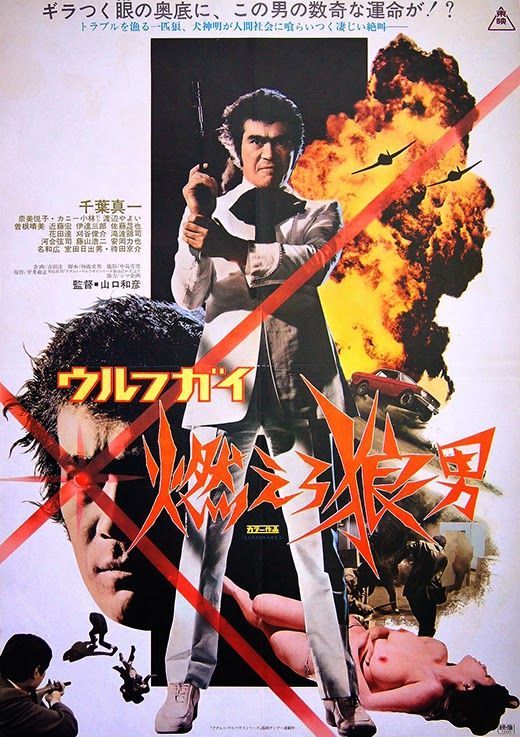
“Wolfguy: Enraged Lycanthrope” AKA “Wolf Guy” (2017 US Blu Ray title)
WATCHING
#wolf guy#wolfguy: enraged lycanthrope#ウルフガイ#sonny chiba#japanese horror#action horror#grindhouse#werewolf#watching#kazuhiko yamaguchi#shinichi chiba#koji fujiyama#saburo date#hideo murota#hiroshi kondo#kyôsuke machida#hiroshi nawa#tooru hanada#kôji miemachi#ryuji hayami#kumi taguchi#yuriko azuma#keiko itô#fukunosuke izumi#naoko izumi#yayoi watanabe#URUFU GAI: MOERO OKAMI-OTOKO
18 notes
·
View notes
Text
Cubo Design Architect pairs blackened wood with concrete for house in coastal Japanese city
An angular, blackened wood structure sits atop two concrete blocks to form this house in Japan's Kanagawa Prefecture, designed by Cubo Design Architect.
Located in the city of Odawara, in the vicinity of a 15th century castle, Hafye is designed to create the feeling of being suspended in mid-air – hence the top-heavy design.
This unusual form, described by locally based Cubo Design Architect as animal-like, was developed directly in response to the brief set by the client.
"The client, who was born and raised in Odawara, wanted a relaxing home where he and his family could look out on this familiar, yet constantly changing landscape" said the team.
"The gently linked rooms are divided into zones by differing floor elevations and ceiling heights, but one can enjoy the views and natural light from each space."
To emphasise the difference between the upper and lower volumes, the building's reinforced concrete structure was left exposed at the base, while the upper sections are clad in dark-stained timber.
Inside, the house contains an open-plan kitchen and living space, two main bedrooms and bathrooms, a guest room and a music room.
Initially, the concrete ground-floor volumes were only going to be used an entrance. But later, at the client's request, this was extended to form the music room and guest room.
This dimly lit entrance space leads directly through to a staircase, bringing residents up into the light-filled "mid-air" volume above.
Here, living spaces are fronted by floor-to-ceiling windows that open out to a balcony, where occupants can look out over the city.
The children's bedroom is located within the pointed end of the overhanging structure, which angles down diagonally to follow the slope of the road.
"The overhanging first floor looks like a nose of an elephant – which I had in mind when I first looked at the site" Hiroshi Saruta of Cubo Design Architect told Dezeen.
The internal materials and textures were chosen to resemble nature, to create the feeling of being outside. The ground floor combines board-marked concrete with wooden fittings and a stone floor.
The simply finished first floor features painted walls that can be used as blackboards, and puts focus on the kitchen's statement unit, which is made from solid stone and wood.
The team also landscaped the sloped site, to create a space the family can use as a vegetable garden.
Related story
Stripped-back holiday chalet by Florian Busch is set at the foot of Mount Yōtei in Japan
Cubo Design Architect is led by architects Hitoshi Saruta, Tomonori Takauchi and Masanori Kanetani. They completed Hafye in late 2015. It has a total floor area of 187 square metres.
Photography is by Hiroshi Ueda.
Project credits:
Architects: Cubo Design Architect
Structural engineer: Kenji Nawa (Nawaken-gym)
The post Cubo Design Architect pairs blackened wood with concrete for house in coastal Japanese city appeared first on Dezeen.
from ifttt-furniture https://www.dezeen.com/2017/03/27/hafye-house-cubo-design-architect-blackened-wood-concrete-odawara-japan/
0 notes
Text
Cubo Design Architect pairs blackened wood with concrete for house in coastal Japanese city
An angular, blackened wood structure sits atop two concrete blocks to form this house in Japan's Kanagawa Prefecture, designed by Cubo Design Architect.
Located in the city of Odawara, in the vicinity of a 15th century castle, Hafye is designed to create the feeling of being suspended in mid-air – hence the top-heavy design.
This unusual form, described by locally based Cubo Design Architect as animal-like, was developed directly in response to the brief set by the client.
"The client, who was born and raised in Odawara, wanted a relaxing home where he and his family could look out on this familiar, yet constantly changing landscape" said the team.
"The gently linked rooms are divided into zones by differing floor elevations and ceiling heights, but one can enjoy the views and natural light from each space."
To emphasise the difference between the upper and lower volumes, the building's reinforced concrete structure was left exposed at the base, while the upper sections are clad in dark-stained timber.
Inside, the house contains an open-plan kitchen and living space, two main bedrooms and bathrooms, a guest room and a music room.
Initially, the concrete ground-floor volumes were only going to be used an entrance. But later, at the client's request, this was extended to form the music room and guest room.
This dimly lit entrance space leads directly through to a staircase, bringing residents up into the light-filled "mid-air" volume above.
Here, living spaces are fronted by floor-to-ceiling windows that open out to a balcony, where occupants can look out over the city.
The children's bedroom is located within the pointed end of the overhanging structure, which angles down diagonally to follow the slope of the road.
"The overhanging first floor looks like a nose of an elephant – which I had in mind when I first looked at the site" Hiroshi Saruta of Cubo Design Architect told Dezeen.
The internal materials and textures were chosen to resemble nature, to create the feeling of being outside. The ground floor combines board-marked concrete with wooden fittings and a stone floor.
The simply finished first floor features painted walls that can be used as blackboards, and puts focus on the kitchen's statement unit, which is made from solid stone and wood.
The team also landscaped the sloped site, to create a space the family can use as a vegetable garden.
Related story
Stripped-back holiday chalet by Florian Busch is set at the foot of Mount Yōtei in Japan
Cubo Design Architect is led by architects Hitoshi Saruta, Tomonori Takauchi and Masanori Kanetani. They completed Hafye in late 2015. It has a total floor area of 187 square metres.
Photography is by Hiroshi Ueda.
Project credits:
Architects: Cubo Design Architect
Structural engineer: Kenji Nawa (Nawaken-gym)
The post Cubo Design Architect pairs blackened wood with concrete for house in coastal Japanese city appeared first on Dezeen.
from RSSMix.com Mix ID 8217598 https://www.dezeen.com/2017/03/27/hafye-house-cubo-design-architect-blackened-wood-concrete-odawara-japan/
0 notes
Text
Hafye / CUBO design architect
centro de ideas daydec (design) © Hiroshi Ueda Arquitectos: CUBO design architect Ubicación: Odawara, Kanagawa Prefecture, Japón Arquitecto A Cargo: Hitoshi Saruta Área: 187 m² Año Proyecto: 2016 Fotografías: Hiroshi Ueda Ingeniería Estructural: Kenji Nawa (Nawaken-gym) © Hiroshi Ueda Descripción de los arquitectos. Ubicado en un barrio residencial con terrazas, el terreno para este proyecto […]
from Hafye / CUBO design architect
0 notes